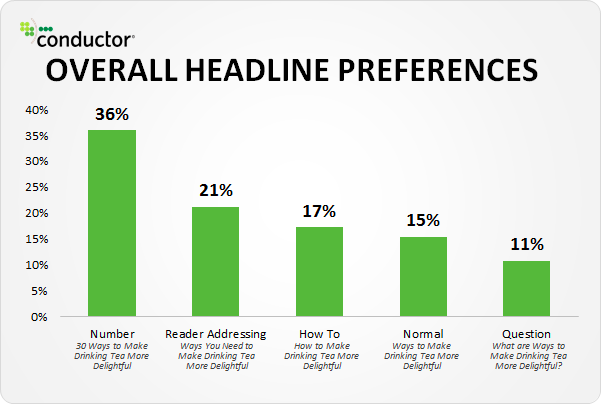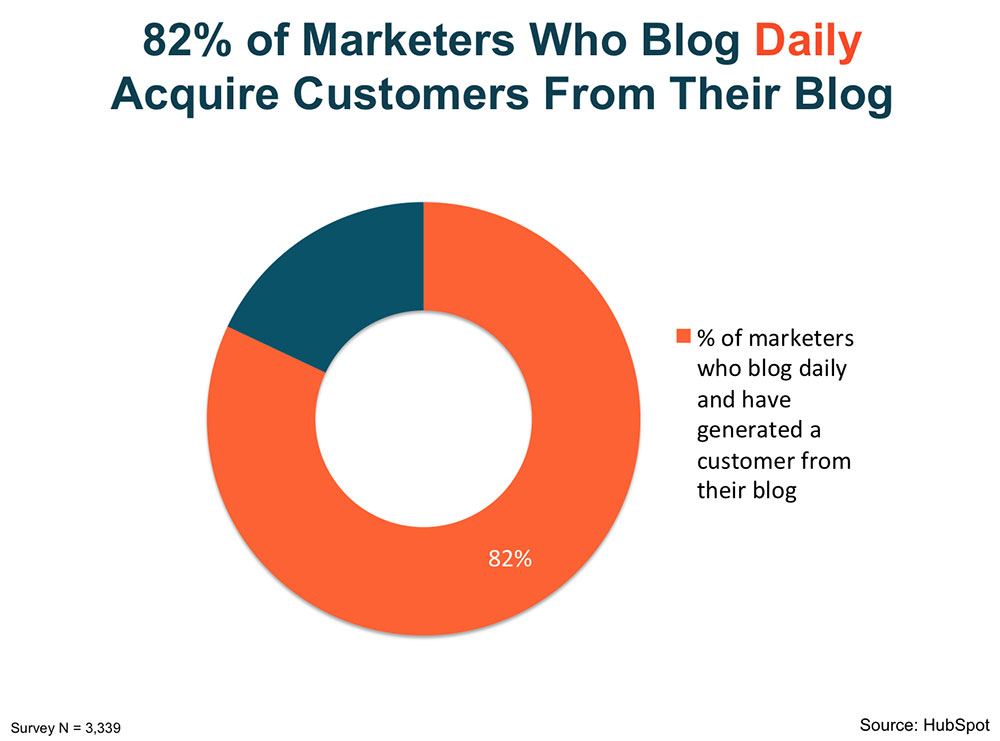Blogging is an essential practice for eCommerce business owners seeking to grow their businesses and increase conversion rates. If you make blogging a priority, your content marketing strategies can yield a good return on investment.
Blogging can boost your authority and brand reputation. How? Relevant, engaging, and valuable content can help you build trust with potential customers. Consequently, you’ll be able to convert them to leads and paying customers.
Writing different types of posts on popular niche topics increases engagement, which encourages potential customers to spend more time on your website.
In other words, it lowers the number of people leaving your eCommerce site after visiting only one page.
More importantly, one of the three key Google ranking factors is high-quality content. What this means is that great content will ensure that your eCommerce website appears in organic search results.
It’s worth noting that different research studies show that:
- 78% of respondents prefer to learn about a company via blog posts rather than ad campaigns.
- 70% of consumers believe a business that publishes branded content is more likely to build long-lasting client relationships.
- 61% of U.S. online consumers make buying decisions after reviewing recommendations on a blog.
- Blogging can acquire 97% more links for your eCommerce website.
With this in mind, we’ll give you insight on the various types of blog content you can use to increase traffic to your eCommerce website and make your consumers happy.
Invest in a Series of How-To Guides
How-to guides are important for your eCommerce business because people constantly search the internet for solutions to their problems. It’s no wonder that how-to articles get a lot of traffic.
How-to content gives your readers step-by-step instructions for using your product or solving a problem. A how-to post allows you to demonstrate authority, empathy and helpfulness to your prospective clients.
The trick is to write how-to guides that are closely related to:
- Your core service or product
- Something that potential clients would find useful
For instance, if you sell gardening tools, you can create articles on how to use various gardening tools. Create readable and relatable articles that will show people the multiple ways they can benefit from your products.
How-to guides have the following advantages from a marketing standpoint:
- Provide real answers to customer problems
- Boost loyalty
- Boost company’s authority and expertise
- Highly shareable
- Naturally include keyword phrases potential customers are likely to search for
- Capture early-stage leads
- Drive organic traffic
- Grow your email list—where email sign up is required
- Boost search rankings
- Increase dwell time
Expert Tip: How-to articles have incredible long-tail search potential.
Create Bite-Sized Listicles to Attract Leads and Social Shares

A list post consists of a list of items, steps, or ideas. These lists can include tips, secrets, reasons, types, or ways of doing something. Listicles can help you deliver large amounts of information in small, numbered sections that are easy to skim.
Listicles can be used to cover a wide range of topics, including educational articles and clickbait content like that found on Buzzfeed.
Imagine coming across the following topics during your Google search:
- 10 Effective Content Marketing Tips for Beginners
- How to Do Content Marketing for Beginners
Which of the two topics would you choose? You’d most likely choose the first one. The first topic provides your customer with easy-to-skim content in the form of a list of tips.
It’s important to note that humans have an average attention span of about 8 seconds. On average, people are not able to pay attention to one thing for too long, which makes listicle articles far more appealing.
A table highlighting the features of a good vs bad listicle:
| Good Listicle | Bad Listicle |
| Visually pleasing | Dumbed down |
| Friendly and informal | Imitative |
| Entertaining | Insufficient |
| Shareworthy | Spammy |
| SEO-friendly | Unbusinesslike |
Listicles are critical for a successful eCommerce content marketing strategy because:
- Their headings are catchy
- Readers know what to expect from the article
- Listicles gets more clicks—36% of people prefer titles with numbers to any other type of title
- They get more social shares and followers
- They attract more readers who you can retain customers
- Listicles break down complex content into manageable parts, making it easy to understand and skim—saves time for busy people
- Listicles are lead magnets to build your brand’s social media presence, grow your email list, or provide expert advice
- They boost SEO
- They encourage conversations and engagement
- Informative listicles drive traffic to more authority content on your website
Expert Tip: Listicles should cover topics on your business niche. Avoid topics that your target audience may not find interesting.
Create Customer Buying Guides to Increase Conversions
The term “guide” lets readers know that the article will provide them with all of the information they require about a certain product. With so many people preferring to shop online, a buying guide helps your customers make an informed purchase.
An informative buying guide also helps potential clients navigate the plethora of options available to them. They keep potential customers from feeling overwhelmed or making common purchasing mistakes.
Buying guides cover product sizes, colours, material, functionality, prices, required maintenance, and other features of an item or brand.
The following are some of the benefits buying guides can offer your eCommerce business:
- Boost SEO and search rankings
- Aid in conversions—they encourage prospective customers to buy from you instead of your competitors
- Accurate and thorough buying guides can lead to satisfying purchases and inspire trust and loyalty in your customers
Create Compelling Product Descriptions to Drive Sales
Saying something about your products can lure potential customers and address buyers’ concerns about a product. Customers use descriptions to determine what they’ll be getting from your products, which can influence their purchasing decision.
Product descriptions address the following:
- Who is the product for? The target audience can be male, female, children, working adults, doctors, pet owners, etc.
- What are the product details? Product details describe aspects such as size, colours, material, price, functions, and availability.
- When can the product be used? Is it used seasonally, during a specific time of day, or for a specific occasion? Such details help customers assess a product’s long-term value.
- Where should your customer use the product? Is it ideal for indoor, outdoor, home, or car use?
- Why is the product beneficial or better than a competitor’s? Here you highlight the value, features, and quality of your product.
- How does the product work? This may not be necessary for all products—but it’s recommended if you’re selling a product with moving parts.
Think about it this way—when someone visits your product page, the goal is to entice them so that they’ll add your product(s) to their cart and checkout. You accomplish this through the use of eye-catching graphics and rich, descriptive content.
The benefits of product descriptions include:
- Boosting your product’s organic search rankings
- Inspiring buyer confidence—product descriptions remove any doubts your customers may have about a product
- Increasing click-through rates and conversions
- Decreasing cart abandonment
- Increasing sales
- Lowering return rates
- Minimizing calls from potential buyers
Ready to Reach Your Target Audience? Create More Content for Your eCommerce Website

No matter the size of your online store, blogging is a key component of every eCommerce business, and it’s important to include it in your marketing strategy.
In a nutshell, the benefits of engaging and communicating with potential customers through various types of eCommerce blog content include:
- Connecting potential buyers to your brand
- Improving user experience
- Boosting search engine optimization
- Developing and strengthening relationships with new and existing clients
- Building trust and establishing your eCommerce business as an industry leader
- Creating opportunities for sharing
- Greater ROI than paid search
With the help of quality eCommerce copywriters, you can deliver a constant flow of interesting and effective eCommerce content that speaks to your audience.
If you were unsure whether to invest in blog content, we believe the information and data we’ve provided will help you make an informed decision.
